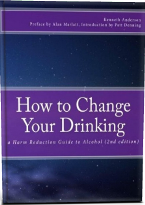Ramelteon is a melatonin receptor agonist which is also used as a sleep aid. Ramelteon has proven quite helpful for people who have difficulty falling asleep. Ramelteon is only available by prescription.
To summarize: Regular melatonin is most helpful if you have difficulty falling asleep. It is not likely to be helpful if you have difficulty staying asleep or with quality of sleep. However, controlled-release melatonin has proven helpful for difficulty staying asleep or quality of sleep. Controlled-release melatonin may also be sold as sustained release, timed, release, or prolonged release melatonin.
Melatonin appears to be safe for adults with no notable side effects.
Warning
Consult your physician prior to use if you are pregnant, nursing or being treated for depression. Do not drive or operate heavy machinery while using melatonin. Not intended for children under 12. Drugs which are metabolized by the liver, including alcohol, may increase melatonin's sedative effect. Taking melatonin together with other sedatives may increase its sedative effect. For information about the interaction of melatonin with other drugs please consult your physician.
For more information about sleep aids please visit our web page: Insomnia, Alcohol, and Sleep Aids.
REFERENCES
Buscemi N, Vandermeer B, Pandya R, Hooton N, Tjosvold L, Hartling L, Baker G, Vohra S, Klassen T. (2004). Melatonin for treatment of sleep disorders. AHRQ Evidence reports and summaries. No, 108.
Free Full Text
PubMed Info
Buscemi N, Vandermeer B, Hooton N, Pandya R, Tjosvold L, Hartling L, Baker G, Klassen TP, Vohra S. (2005). The efficacy and safety of exogenous melatonin for primary sleep disorders. A meta-analysis. J Gen Intern Med. 20(12), 1151-8.
Free Full Text
PubMed Abstract
Buscemi N, Vandermeer B, Hooton N, Pandya R, Tjosvold L, Hartling L, Vohra S, Klassen TP, Baker G. (2006). Efficacy and safety of exogenous melatonin for secondary sleep disorders and sleep disorders accompanying sleep restriction: meta-analysis. BMJ. 332(7538), 385-93.
Free Full Text
PubMed Abstract
Wade AG, Ford I, Crawford G, McMahon AD, Nir T, Laudon M, Zisapel N. (2007). Efficacy of prolonged release melatonin in insomnia patients aged 55-80 years: quality of sleep and next-day alertness outcomes.
Curr Med Res Opin. 23(10), 2597-605.
PubMed Abstract
Wade A, Downie S. (2008).Prolonged-release melatonin for the treatment of insomnia in patients over 55 years. Expert Opin Investig Drugs. 17(10), 1567-72.
PubMed Abstract



